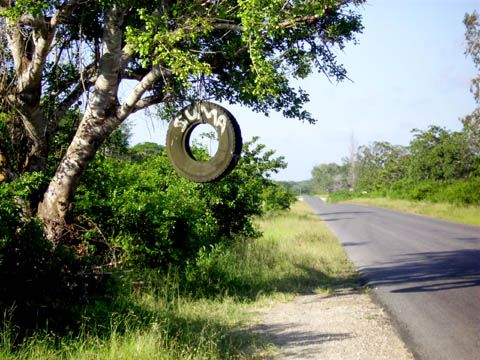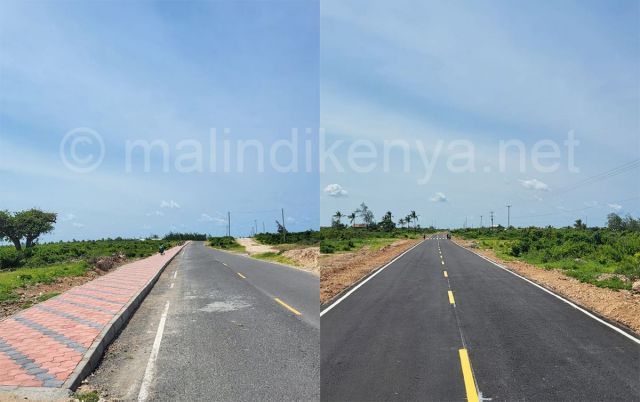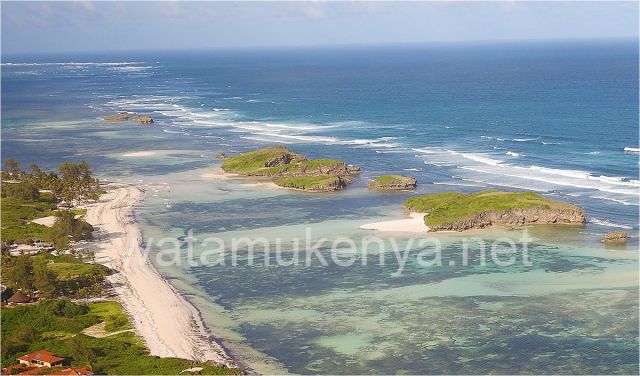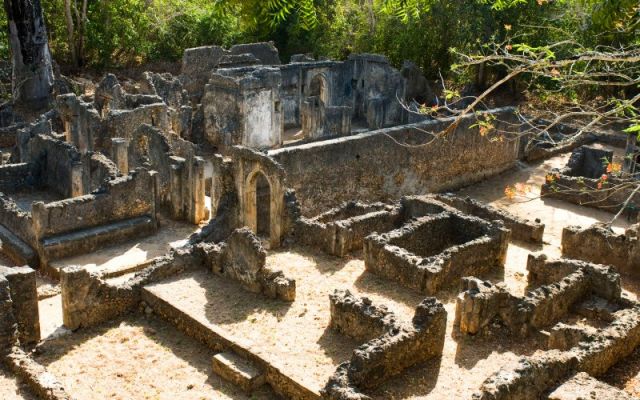
STORIES
05-12-2011 di Freddie del Curatolo

Hundreds of thousands of tourists, many of them Italian, from the past twenty years have traveled back and forth the Mombasa-Malindi.
Who knows how many of them will have noticed a detail that has not changed since then.
Between Kilifi and Watamu (strictly speaking, near the village of Matsangoni) the early nineties there is a tire hanging from a branch, on the roadside, with an inscription in white paint: "Suma".
Maybe among residents who have done so many times that road, someone has asked the why of that wheel and that name.
It is no hidden advertising, subliminal message and even the warning of a tire that operates nearby.
Suma is the nickname of a certain Ismail, a Kenyan Muslim who lives there in front and with the tire of his car has created the sign of his private home. A small estate consisting of three large cement mixed mud huts with tin roofs that face brazenly on the large paved road, only coastal link. The main house instead is built entirely of stone, such as mountain houses of the past in Italy.
Suma behind the house, there is the shamba home to his wives and the many children.
It meets one of them, a smiling young man. "Suma" is my father Ismail, he says candidly, and is the father of many of us.
A good man who wanted to signal its presence to anyone who comes to visit or just to those who pass beyond.
For twenty-five years at least, the tire makes me think that if one part many things have changed on the Kenyan coast, there are small everyday symbols, seemingly insignificant, that tell us that this extraordinary place will never change.
NEWS
di redazione

The low season in Kenya sometimes holds some nice surprises, especially when new administrations (such as the one in national government and the one sitting in Kilifi's county offices) decide to...
ENVIRONMENT
di redazione

Environmentalists move by two years to avoid a mess that could relate to the Arabuko Sokoke Forest, which stretches from Gede in Matsangoni, along the Mombasa-Malindi road where there are also inputs for tourists, until well into the street for...

From ancient Arabic scriptures, it is known that the Arabuko forest stretched from just outside Malindi to almost Kilifi and was populated by wild beasts, poisonous snakes (cobras above all) and elephants, which often...
NEWS
di redazione

Improving the infrastructure at Watamu.
It is a slow process but its fruits, as it was previously for lighting all the main artery and how it will be for connecting the coastal road with Malindi, via Mayungu.
The Timboni road pavement...
PLACES
di redazione

Bad news does not always bring as much bad news, sometimes it rains in the dry and not in the wet...

From ancient Arabic writings, we know that the Arabuko forest stretched from just outside Malindi almost to Kilifi and was populated by wild beasts, poisonous snakes (cobra especially) and elephants, who often came down to unexplored beaches and bays protected...
HISTORY
di redazione

Many who know Kenya's history are convinced that Christianity was brought here by German missionaries who opened the first Catholic mission in...
NEWS
di redazione

The residents and communities of the Arabuko Sokoke forest protest against the excavations on its edges.
The largest rainforest of the Kenyan coast, which extends up to Gede Matsangoni Mijomboni and Jilore south and north, is a key lung not...
KENYA COAST
di redazione

Mombasa is certainly the oldest city in Kenya and one of the historical ports of East Africa. The other landings mentioned as early as the tenth century AD by early navigators, are now ruins of cities (such as Kilwa in...
AFRICAN POEM
di Freddie del Curatolo

Watamu the beautiful.
Malindi the magic.
Watamu the young and sparkling.
Ancient Malindi but still interesting.
BEVERAGE
di redazione

It is one of the most detox drinks you can taste on the Kenyan coast, and particularly in Lamu, in some Swahili bars that offer fresh juices (the unmissable tamarind, the classic passion and many others). We are talking about beet...